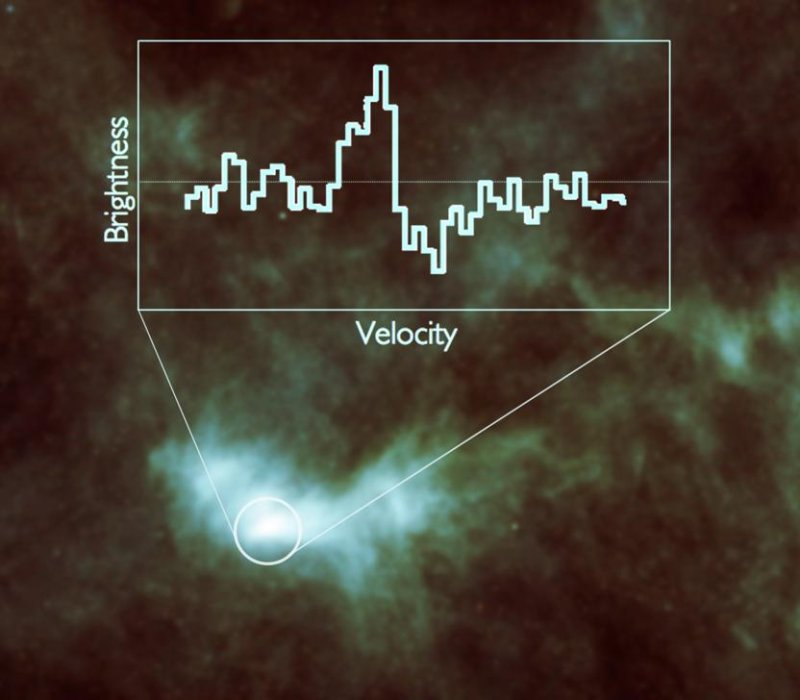Close-up of L1544 with the water spectrum seen by Herschel, taken from the center of the pre-stellar core. Credit: ESA/Herschel/SPIRE/HIFI/Caselli et al.
PARIS, Oct. 9 (UPI) -- Enough water vapor to fill Earth's oceans 2,000 times has been found in a distant gas and dust cloud ready to collapse into a new star, European scientists say.
Astronomers using the European Space Agency's Herschel space telescope say the finding in a cold pre-stellar core in the constellation of Taurus known as Lynds 1544 is the first detection of water vapor in a molecular cloud on the verge of star formation.
Stars form within these pre-stellar cores -- cold, dark clouds of gas and dust -- that contain all the ingredients to make solar systems like our own.
"To produce that amount of vapor, there must be a lot of water ice in the cloud, more than 3 million frozen Earth oceans' worth," Paola Caselli from the University of Leeds in Britain said.
The vapor has been liberated from icy dust grains by high-energy cosmic rays passing through the cloud, she said.
"Before our observations, the understanding was that all the water was frozen onto dust grains because it was too cold to be in the gas phase and so we could not measure it," Caselli said in an ESA release Tuesday.
"Now we will need to review our understanding of the chemical processes in this dense region and, in particular, the importance of cosmic rays to maintain some amount of water vapor."
The astronomers said the water molecules are flowing towards the heart of the cloud where a new star will probably form.
"There is enough material to form a star at least as massive as our Sun, which means it could also be forming a planetary system, possibly one like ours," Caselli said.
Some of the water vapor detected will go into forming the star, but the rest will be incorporated into the surrounding disc, providing a rich water reservoir to feed potential new planets, the researchers said.















